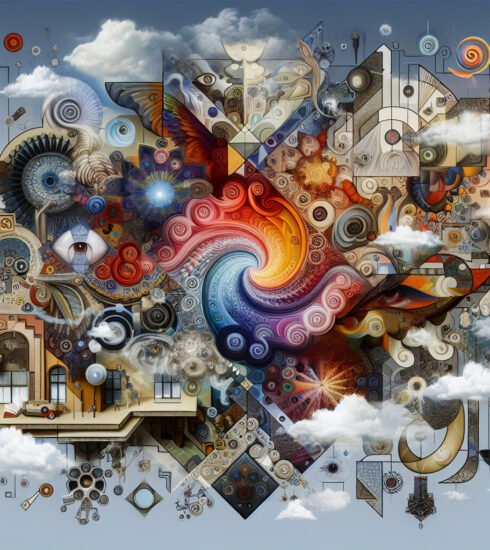Belgian Surrealism Journey: Exploring the Enigmatic Echoes of Dreamscapes
Echoes of Dreamscapes: Journey Through Belgian Surrealism’s Hidden Corners
Belgium, a modest European country known for its chocolates, waffles, and rich cultural heritage, also harbors one of the most intriguing art movements: Surrealism. This artistic expression, known for bending the rules of reality, finds its vibrant voice in Belgian artists whose works whisper through the corridors of time. Echoes of Dreamscapes: Journey Through Belgian Surrealism’s Hidden Corners takes us on an extraordinary voyage through this surreal world.
The Roots of Belgian Surrealism
The Surrealism movement officially began in the early 20th century, catalyzed by the Dada movement in France. However, the Belgian variant distinguished itself with an ethereal blend of mystery, rebellion, and poeticism, instilled with native Belgian sensibilities. Artists like René Magritte, Paul Delvaux, and Marcel Mariën, among others, were at the helm of this revolution.
Belgian Surrealism diverged from its French counterpart by focusing intensely on the mundane, transmuting every day into the fantastic. The Belgians crafted dreamscapes that invited viewers to question reality and plumb the depths of their subconscious minds.
The Titans: René Magritte and His Peers
René Magritte, arguably the most famous Belgian surrealist, pioneered a distinct style characterized by unmistakable imagery such as cloudy skies, bowler hats, and everyday objects in unusual contexts. His works, such as ‘The Treachery of Images’ and ‘The Son of Man’, have become emblematic of the surreal and continue to captivate audiences worldwide.

Paul Delvaux and Marcel Mariën added to this tapestry with their unique takes on surrealism. Delvaux’s works, often showcasing dreamlike scenes with skeletal figures and unblinking women, are hauntingly beautiful. Mariën, on the other hand, expressed surrealism through multifaceted roles as a collagist, writer, and filmmaker.
Hidden Corners: Lesser-Known Masters
While Magritte, Delvaux, and Mariën are household names within surrealist circles, numerous other Belgian artists contributed equally compelling visuals and thoughts to the movement. Here, we unearth some of these hidden gems:
- E.L.T. Mesens: An ardent promoter of Surrealism and a close collaborator of René Magritte, Mesens was instrumental in bringing Belgian surrealism to the international stage. His collages echo the fragmented nature of dreams themselves.
- Jane Graverol: Known for her detailed, mystical paintings, Graverol’s work splits the line between reality and fantasy, often dealing with themes of femininity and spirituality.
- Oudaan Courten: Blending grotesque and whimsical elements, Courten’s art adds a darker dimension to surrealism, challenging and enthralling audiences simultaneously.
Magic Realism: A Subtle Shift
Belgian surrealism also finds kinship with Magic Realism, a literary and artistic genre that roots fantastical elements within a realistic framework. Artists like Léon Spilliaert and Gustave Van de Woestijne employed techniques that straddled the line between surrealism and magic realism, creating hauntingly believable dreamscapes.

Spilliaert’s eerie, nightmarish landscapes and portraits evoke a destabilizing uncertainty, while Van de Woestijne’s depictions of rural life infuse the common with an uncanny charm. Their works contribute to the diverse narrative of Belgian surrealism.
Famed Exhibitions and Museums
Belgian museums and galleries offer numerous venues to explore Surrealist works. Here are a few noteworthy destinations:
- Magritte Museum in Brussels: Housing the largest Magritte collection in the world, the museum offers a comprehensive look into his career, showcasing over 200 original works.
- Musée des Beaux-Arts in Charleroi: Featuring notable surrealist works by Belgian artists, the museum also delves into the broader context of 20th-century European art.
- Groot-Bijgaarden Castle: Historic and enchanting, the castle occasionally hosts exhibitions highlighting Belgian artists and their contributions to surrealism.
Impact on Contemporary Art
Belgian Surrealism continues to influence contemporary artists. Works by artists such as Hans Op de Beeck and Kris Martin reflect the movement’s enduring legacy in modern visual culture. They maintain the same spirit of enigmatic dreamscapes and provoke thought through subtle, surrealistic patterns.
Exploring these artists’ works offers insights into how surrealism has woven itself into the fabric of contemporary art, maintaining relevance and evoking awe across generations.

The Broader Cultural Influence
Surrealism in Belgium has permeated beyond the canvas, influencing literature, theater, and cinema. The ever-alluring dreamscape narratives speak through writers like Henri Michaux, playwrights like Jean-Pierre Verheggen, and filmmakers such as André Delvaux.
These cultural crossovers showcase the interconnectedness of Belgian surrealism with various art forms, enriching the Belgian cultural landscape in numerous ways. Literature and cinema effectively convey surrealist themes, as seen in works like Delvaux’s film ‘The Man with the Shrunken Head,’ which weaves a surreal tapestry of mystique and reality.
Further Exploration
To delve deeper into Belgian surrealism, consider visiting An article available at https://belgium-trip.fun/art-and-culture/error-failed-to-retrieve-the-keyword-13/ for curated insights and An article available at https://belgium-trip.fun/art-and-culture/belgian-surrealists/ for a detailed exploration of the major figures shaping this movement.
Conclusion
The realm of Belgian surrealism is a testament to the power and mystery of the human psyche. Through its spellbinding echo of dreamscapes and reality-defying art, it continues to enchant, provoke, and inspire. From the illustrious works of René Magritte to the hidden gems of E.L.T. Mesens and Jane Graverol, Belgian surrealism’s hidden corners are a treasure trove awaiting discovery. Embarking on this journey through surrealistic dreamscapes offers more than just an art history lesson; it offers a glimpse into the limitless bounds of human imagination.





